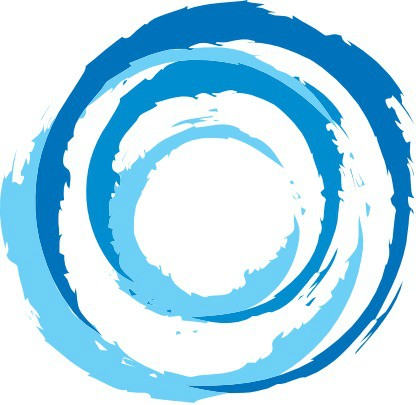Appropriate trade show staff can make or break your campaign. They are the essence of your exhibit strategy, and if it wasn't for them, your pre-event marketing efforts would be near pointless.
Although it's essential to have an exhibition that attracts people, you need to have staff who are enthusiastic and well-trained. Otherwise, you won't achieve your desired outcome.
Below are approaches to choosing and motivating employees for better results:
1. Experienced employees are key
Make a great impression with employees who are enthusiastic and knowledgeable.
2. Choose people who want to be there
It's common knowledge that most staff don't want to campaign at trade shows, but you shouldn't give the task to employees who are profoundly lacking in experience. If you're fortunate and have knowledgeable employees who genuinely enjoy these types of events, they should be the first candidates. If not, then keep reading!
3. Motivate your staff with incentives
If there aren't any initial enthusiastic employees volunteering, try to make it worth their while. Expecting them to attend a trade show because it's their job isn't a promising idea. Transform employees who weren't overly enthusiastic about the concept into highly motivated trade show staff by offering simple incentives.
.jpg?width=600&name=A%20'How-to'%20Guide_%2010%20Tips%20for%20Staffing%20Your%20Tradeshow%20(Successfully).jpg)
4. Use the right people for the right show
Every sales rep has their own unique skill set. They possess different interests, hobbies and are knowledgeable in different areas. Because of this, they can't take on every role. They only have a small period to captivate and impress people, so it's crucial that they come across as experts. If the media will attend, make sure there is an employee who is experienced in dealing with them. If you are presenting technical products, have a professional staff member present who knows the ins-and-outs of the field.
5. Short on appropriate staff?
Consider contracting with an exhibit staffing company or use volunteers who are enthusiastic and fully engaged in achieving your company's goals.
These temporary team-members will be representing your company at the event and need to portray your image and expertise effectively. Be sure to provide everyone with thorough training in all aspects of your organization. Make use of a script that quickly and effectively greets and captures visitors.
Decide beforehand on the number of staff required to handle visitor crowds.
6. How to determine your staffing requirements:
Step one: Multiply the number of registered participants by roughly 20 percent to reach a conservative estimate of potential prospects.
Step two: Use the number you arrived at in Step One and half it if the show audience is highly targeted or divide it by a third if the show has a general audience.
Step three: Divide Step Two's result by the total hours your booth will be open to getting estimated hourly visitor numbers.
Step four: Divide the visitors per hour from Step Three by the number of demonstrations you think an individual personnel member can effectively handle in an hour.
The result projects how many trade booth staff you will need in any given hour.
7. Ensure your trade show staff are aware of your goals
Never send your employees to a trade show without actually knowing its purpose and what they should be focusing on.
Below are some areas your trade show staff should be aware of:• new products in the pipeline• convey the key message• potential complications and how to handle them• the most important trade show activities, presentations, and events
Being aware of these will give them a clear idea of how to interact with the people who visit the booth and easily gauge their overall success.
8. Give each booth staffer a trade show specialty
When you exhibit, assign each team member a trade show assignment. Some responsibilities include:
- Booth Set-Up: Ensuring the display is ready before attendees arrive and dismantled afterward.
- Prospecting: Conducting daily staff briefings on effective sales and communication strategies rehearsed before the conference.
- Competitor Insights: Gain additional insight into product lines, developments, sales strategies, promotional messages, and pricing.
Also, assign someone the task of walking around the exhibit hall evaluating and documenting displays to see how your booth compares.
9. Training is vital for your trade show staff
They should know what your company's mission and target audience is, as well as your products and sales message. Explain the expectations of when they should arrive, and how long they are needed for and the appropriate etiquette. Training is crucial no matter if they're sales staff or technical staff. It's important regardless if they're experienced or newbies.
Don't forget to follow up!
When the trade show is over, see how it went by surveying the staff and use reports to determine the overall success of the campaign.
If mistakes are made, analyze them and use that information to avoid repeating the same ones in the future.
References
Lundy, A. (2016, April 22). 5 Trade Show Staffing Mistakes to Avoid. https://www.sonasmarketing.com/blog/five-trade-show-staffing-mistakes-to-avoid
Olvera, L. (2016, March 31). 5 Tips to Find Event Staff: From Presentation to Creativity. https://www.sonasmarketing.com/blog/5-tips-to-find-event-staff-from-presentation-to-creativity
Trade Show Staffing Formula. (n.d.). Retrieved from Trade show advisor: https://www.trade-show-advisor.com/trade-show-staffing.html
How to manage and motivate trade show booth staff. (n.d.). Retrieved from trade show advisor: https://www.trade-show-advisor.com/trade-show-booth-staff.html



